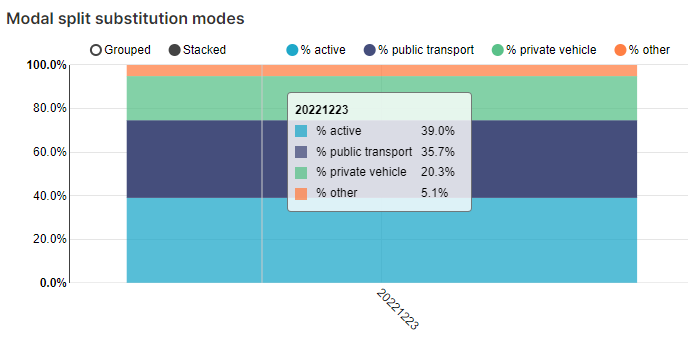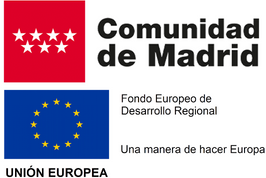
Context
Car, motorbike, bicycle and scooter sharing services have spread across a multitude of cities in recent years, adding a new possibility to the offer available to meet citizens’ mobility needs. This initial phase has been characterised by an enormous dynamism, under which shared mobility operators have prioritised rapid deployment strategies that promote their visibility against their competitors. At the same time, the authorities responsible for urban mobility planning have encountered difficulties in managing these services, adopting varied positions ranging from the implementation of specific incentives to a total ban on operation.
In the new phase of consolidation of shared mobility services, one of the demands shared by operators and authorities is the need for analytical tools for better decision making. Operators face the challenge of ensuring the financial viability of their business models, for which it is essential that the planning and operation of the service takes into account the impact of each decision on demand. Authorities need to integrate these services into their urban sustainability strategies by assessing the impact that different regulatory frameworks may have on their provision and on the transport system as a whole. Both needs converge in the same requirement: to have demand forecasts for shared mobility services that are sensitive to different configuration scenarios for better planning, management and evaluation.
The SHAPEMOV project
The SHAPEMOV project developed a simulation platform for shared mobility systems to support operators and authorities in their decision-making processes. The platform integrates the latest advancements in modelling demand for these services, improving the functionalities of the prototype developed by Nommon in the DSS4SM project and extending its application to the design of regulatory frameworks by authorities. The added value of this product lies therefore in its capacity to increase the profitability of services provided by shared mobility operators, as well as its ability to facilitate the feasibility of regulatory measures for these emerging forms of mobility.

Goals
The overall objective of SHAPEMOV was the development of a simulation platform for shared mobility systems capable of supporting the planning and management of services by operators, as well as the design of regulatory frameworks for these services by the competent authorities. The specific objectives of SHAPEMOV were:
- Define the needs that transport authorities and shared mobility operators have in relation to the design and implementation of regulatory frameworks, in order to include the necessary indicators, functionalities and interactions with other tools in the platform.
- Refine existing data analysis techniques for the characterisation of demand for shared mobility systems based on geolocalized data sources, in order to increase the knowledge on the users’ profile and the use they make of these services.
- Formulate, calibrate and validate demand models for shared mobility systems that allow the simulation of different regulation scenarios, calculating the necessary indicators to assess the impacts of these scenarios on the sustainability of urban mobility and the viability of business models.
- The development of simulation tools that allow operators to analyse different deployment strategies — whether new deployments or modifications (e.g. extension of service areas of existing services), or operations (e.g. fleet management, pricing policies, etc.) — that are compatible with city regulatory frameworks, including indicators of both service (optimal fleet size, etc.) and city impact (space occupied, etc.).
- The development of simulation tools that allow authorities to assess the impact on the sustainability of mobility in the city as a whole for different regulatory scenarios of shared mobility services.
- Integrate demand models into visualisation platforms that support collaborative decision-making processes in the design and implementation of regulatory frameworks.
Results
The main result of the SHAPEMOV project was the development of a decision support tool designed for the planning and management of shared mobility systems for both authorities and operators. The tool covers different categories of use cases, some focused on strategic planning, such as system expansion, and others more operational, like short-term demand prediction or optimising the redistribution of vehicles between areas.
One of the most interesting outcomes of the project is the development of the modal distribution indicator. Based on the demand prediction for each origin-destination pair and available modal split information in the city (from mobility reports, surveys of shared mobility users, etc.), an algorithm has been developed that allows predicting by which other mode shared mobility trips are being captured. In other words, if shared mobility vehicles were not available, by which mode would the trip be taken: private vehicle, public transport, active mode, or others? Through these results, both cities and operators can analyse which other modes are competing with shared mobility to prevent it from cannibalising public transport and, in turn, to capture more trips from private vehicles.

Thanks to this indicator and a Life Cycle Assessment (LCA) analysis, the environmental impact of different modes can be estimated. The tool provides predictions of equivalent CO2 emissions in each zone.

The advancements derived from the SHAPEMOV project have improved the development of Nommon’s solution WiseRide.

This project was co-financed by the European Regional Development Fund, in the framework of the regional strategy for research and innovation for smart specialisation (RIS3), within the ERDF operational programme of the Community of Madrid for the period 2014-2020. "A way to make Europe".